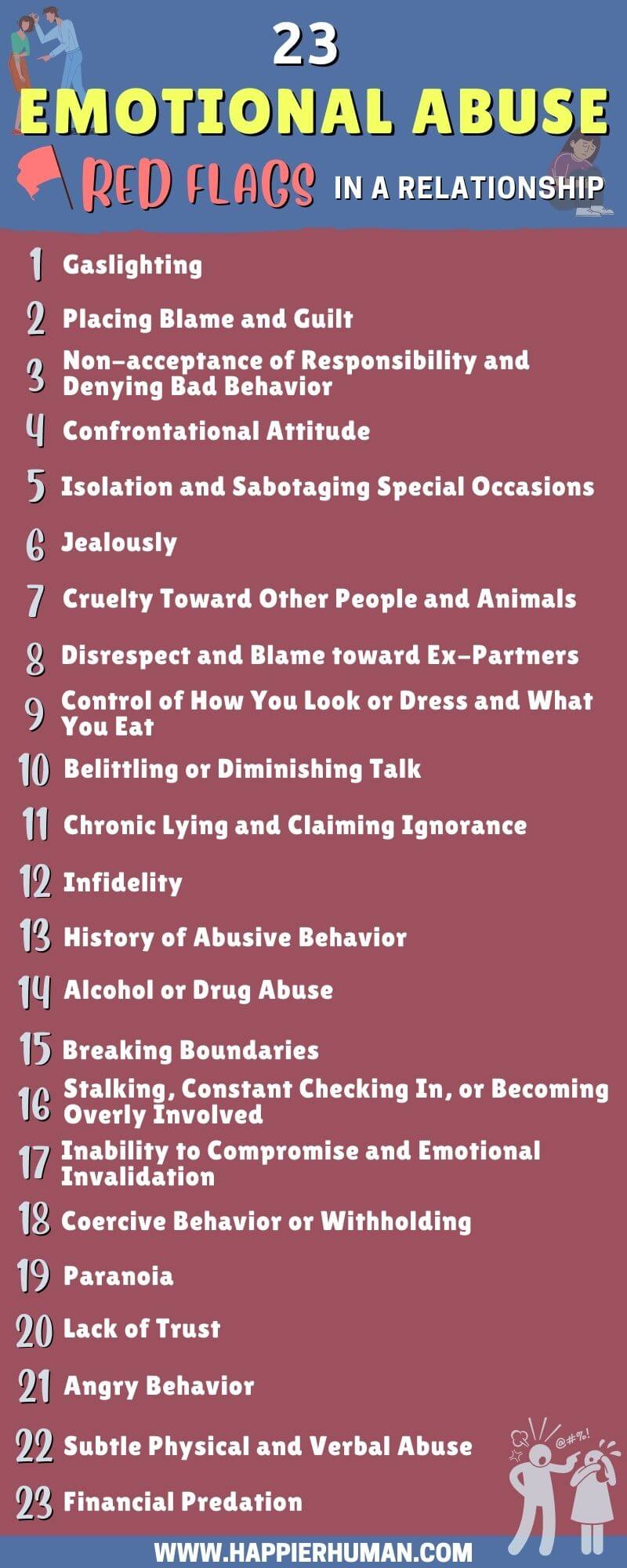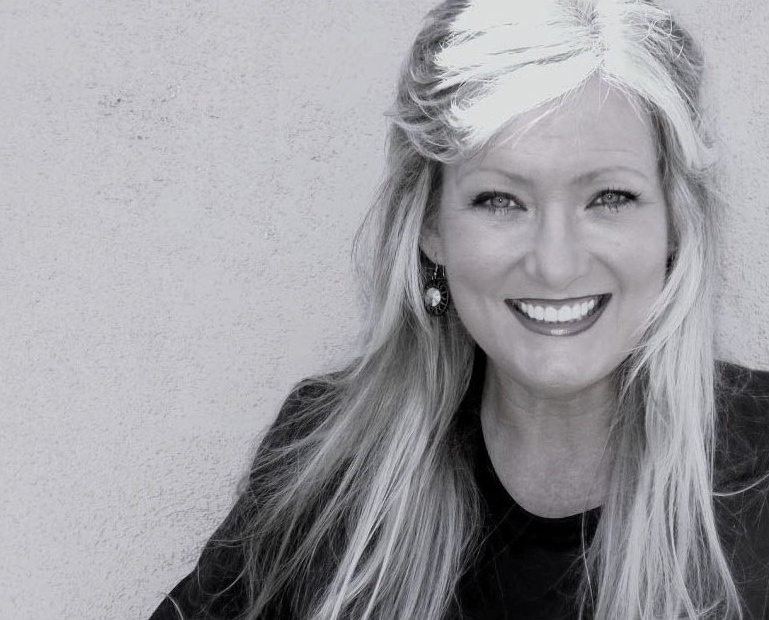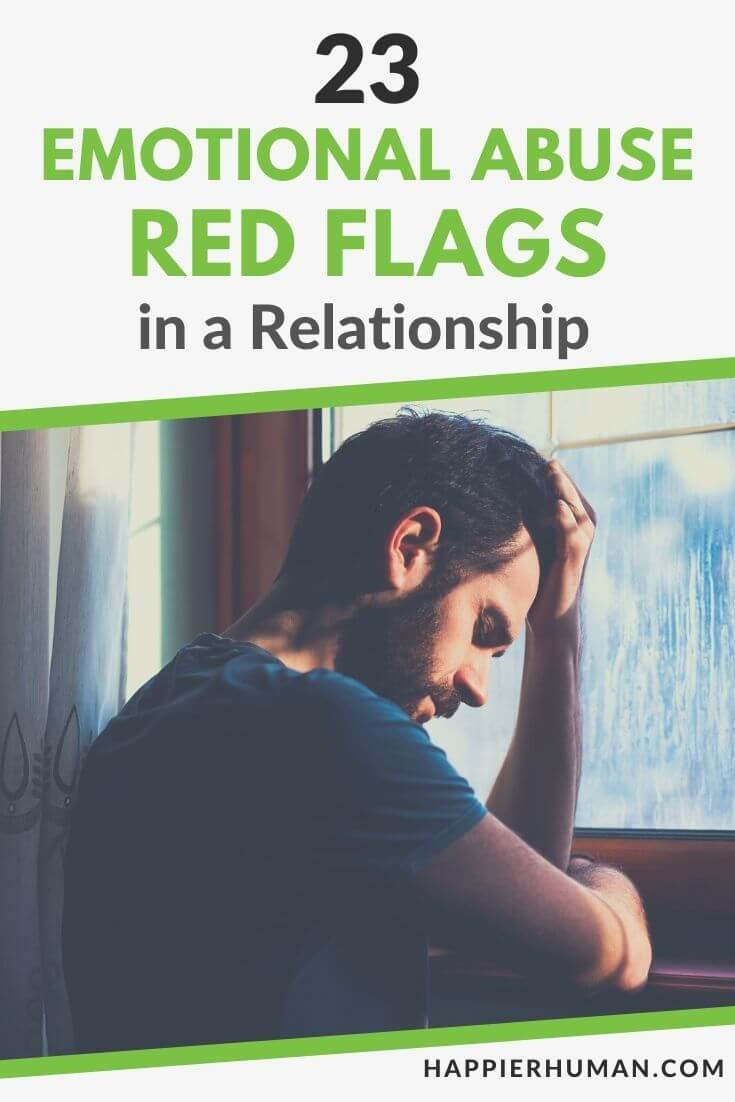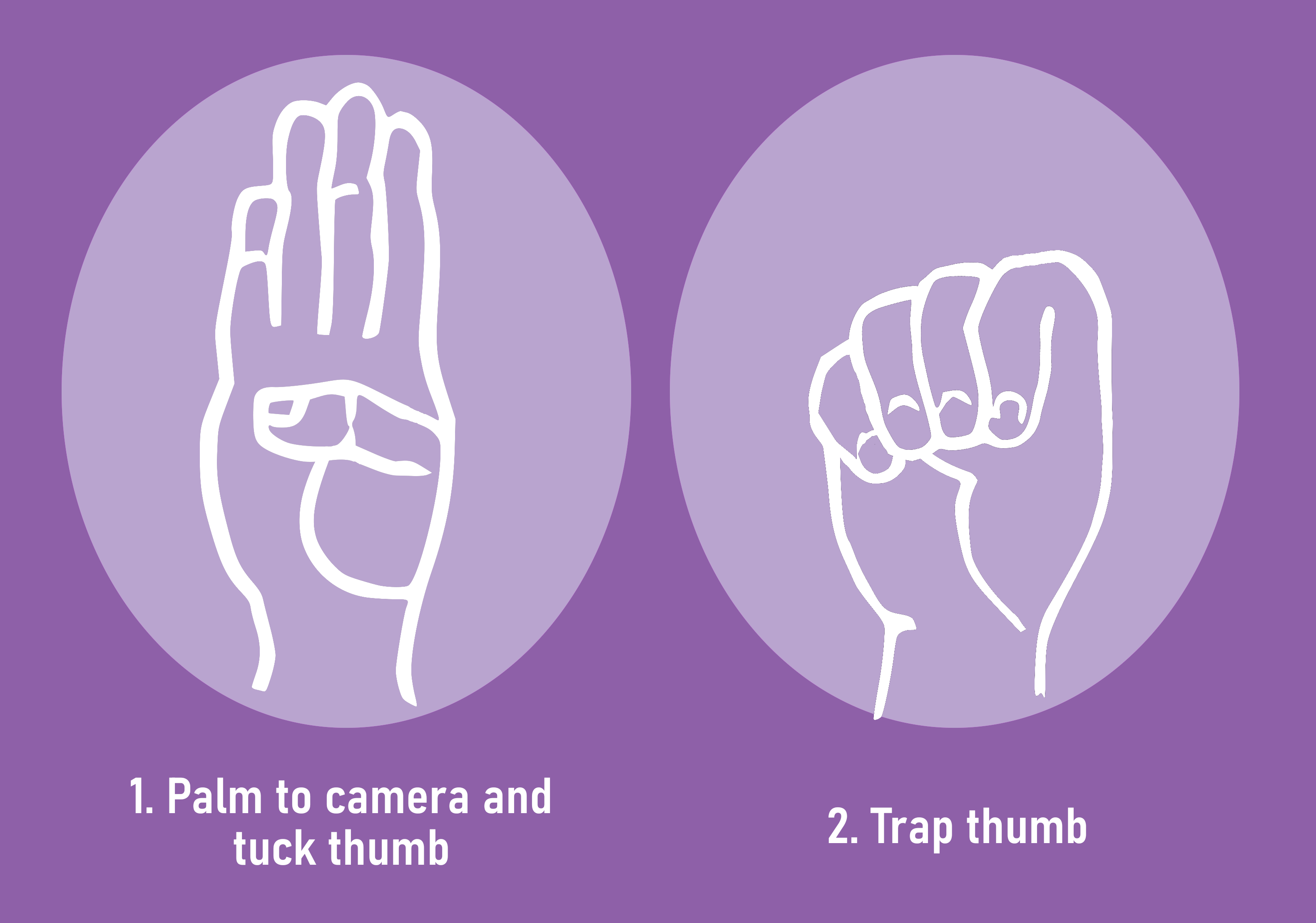Emotional abuse red flags in a romantic relationship are serious.
While men and women are equally vulnerable, it takes courage to admit that emotional abuse is happening. And the positive side of uncovering it is that you can detach, heal, and create a new life free of abuse.
To start, you just have to recognize the signs.
What are Red Flags in Relationships?
Red flags are signs or precursors of peril.
The color red has a long history of signifying danger, aggression, or bad things to come. Flags are markers to pinpoint locations or places requiring attention. So, a red flag marks a danger that you need to monitor closely or act on to stop the threats.
Red flags in relationships work the same way. Whether they pop up in your mind or someone else points them out to you, pay attention. They may save you from tremendous agony or serious injury.
Romantic relationships are especially susceptible to emotional abuse because they are a bond of commitment, trust, and vulnerability. When an abusive partner is armed with these precious components of a relationship, they know they have a solid hook into the other person.
It only takes a smooth move or two to transition these components into weapons of emotional abuse, where an abuser gets whatever they want from their partner. These moves are red flags.
An abuser may use any number of tactics to manipulate and control, including physical, emotional, financial, sexual, verbal, psychological, or cultural. Since all of these abuse types touch and damage a person’s emotional well-being, they are also emotional abuse.
Why Is It Important to Recognize Red Flags Right Away?
Often, an abuser will use more than one type, overlapping and strengthening control over the other person. Therefore, it is crucial to recognize the warning flags as soon as possible.
To spot and identify red flags of emotional abuse in a relationship is critical to preserving physical, mental, and emotional well-being. However, many benefits can come from recognizing and addressing them.
These are a few:
On the flip side, if the red flags are not recognized and dealt with, a person may be affected detrimentally. Being in an abusive relationship not only touches a person’s core, their soul, but it also hits on their physical and emotional health. It distorts their perspective of life and the world.
An abuse victim’s perspective often views the entire world as dishonest and abusive, leaving the person to drown in hopelessness, grief, confusion, anxiety, depression, fear, isolation, and skepticism of everything and everyone.
This, in turn, affects how the brain functions and determines the chemicals it releases into the body, which may cause disease and illness.
Don’t wait to evaluate your relationship. If you need help, there are many resources you can tap into whenever you are ready. If your situation is dire, learn how to silently signal that you are in danger.
This list of 23 red flags of emotional abuse is a serious compilation of warnings to look for when you feel you may be in an abusive relationship.
The first step to resolving the problem is to recognize what may be happening to you, and the next step will be to take the right action to make it stop. Once it has ended, you will need to find healing and recovery.
23 Emotional Abuse Red Flags in a Relationship
1. Gaslighting
Gaslighting is a manipulation tactic that attempts to turn factual information into foggy confusion. It is an adamant stance that what happened didn’t really occur or happened differently than reality.
When gaslighting occurs, you may feel like you’re losing your mind. You doubt your memory and even the facts. Gaslighting can leave you feeling depressed and confused, questioning your own ability to make decisions. That’s exactly what it is meant to do.
It is one of the most powerful emotional abuse red flags. It is a blatant attempt to not only control you and your thoughts but also to control the narrative, shaping the truth to the gaslighter’s advantage.
Learn more about gaslighting in these posts:
- 37 Gaslighting Examples & Phrases That Manipulative People
- 11 Signs of Unintentional or Unconscious Gaslighting
- 15 Ways to Turn the Tables on a Gaslighter in Your Life
2. Placing Blame and Guilt
An emotionally abusive relationship cannot exist without the placing of blame and guilt. The abuser shifts the attention from their bad behavior to the weaknesses in the survivor’s response. Often, the abuser will even take on the role of victim to strengthen their claim that the blame rests with the survivor.
As a follow-up to secure that the blame sticks with the survivor, the abuser will demand that the victim admit guilt and feel shame. When they succeed, they solidify their false idea that they didn’t do anything wrong, and the survivor is solely to blame.
3. Non-acceptance of Responsibility and Denying Bad Behavior
Sometimes, everyone denies responsibility for wrongdoing, whether it’s due to the pain of feeling shame, an inability to admit a mistake, or other reasons. It’s common human behavior and usually isn’t directed at any one person. Instead, it’s an internal issue.
When denying bad behavior turns into an emotional abuse red flag is when an abuser constantly rejects responsibility for their actions, tries to shift the focus, or explains it away to the survivor as, “I did it for you.” They will use every excuse to escape responsibility and externally project it onto others.
4. Confrontational Attitude
Displaying an aggressive attitude is an attempt to make oneself larger or more significant than one perceives themself to be and control others and the environment.
Often, it arises from a sense of self-insecurity and lack of self-esteem. It can range from minor disputes to hyper-aggression, rage, and other sociopathic or psychopathic explosions.
A confrontational attitude is an emotional abuse red flag when used to manipulate, control, and inflict pain onto a victim. In the abuser’s mind, they are the judge and jury, and the victim “deserves it.”
The best response is to remove yourself from the situation to a safe place. Keep your distance and stay calm. The worst thing you can do is participate in the drama or try to argue. If the confrontation escalates to a dangerous level, don’t hesitate to call 911.
5. Isolation and Sabotaging Special Occasions
Another critical red flag in a relationship is the isolation tactic. It is meant to separate the survivor from any support network or backup to save themselves. It also prevents the abuser’s methods and behaviors from being uncovered.
When the isolation tactic is being played out, an abuser will:
The isolation tactic may spill over into sabotage in the form of retaliation during holidays or special events. There is no limit to how an abuser may disrupt a gathering of the victim with family and friends to control and divide them.
Sometimes isolation is more about your partner simply wanting a low key relationship. Particularly in the early stages. Read more about low-key relationships to see if it is isolation or just being low key.
6. Jealously
A little jealousy is normal human behavior, but when a twinge of it becomes obsession or suffocation of the other person, it is a red flag of emotional abuse. You need to know how to spot it.

When a new relationship moves too fast, the other person monitors or intrudes on communications, causes repeated jealousy conflicts, or blames you, it can be a big problem. Any of these may quickly develop into control issues and may indicate signs of an emotional abuser.
7. Cruelty Toward Other People and Animals
Cruelty on an emotional abuse level comes in different forms. It may show itself as simple passive-aggressive comments, or it may surface as unabashed, shameless cruelty and physical harm to human beings and animals.
Cruelty is an act of rage, domination, manipulation, and control over others by inflicting unnecessarily harsh emotional, mental, or physical pain. The intent is always to inflict as much suffering and distress as possible. Sometimes, it is meant to cause a submissive response, and other times, it is a punishment.
Again, the best response is to remove yourself from the situation to a safe place. Stay at a distance and remain calm. If it escalates to a dangerous level, don’t hesitate to call 911.
8. Disrespect and Blame toward Ex-Partners
A huge red flag is the disrespectful bad-mouthing of ex-partners. Granted, the ex may have done ugly things, but when everything was always their fault, something is amiss.
Some behaviors to observe are:
A few things an abuser will probably say about their ex:
Disrespectful or blaming talk about ex-partners is either a sign of unresolved self-esteem issues or emotional ties or a tactic to manipulate and control the survivor. Keep in mind, how your partner talks about your ex will be how they talk about you if the relationship fails.
9. Control of How You Look or Dress and What You Eat
Controlling how you dress, look, or even eat is a red flag of emotional abuse. The abuser may control the amount of sleep and the way the victim bathes or exercises. They may even influence whether the person receives medical care.
To justify their actions, they will come up with any excuse. The main one is that they are doing it for the survivor’s own good. In fact, it doesn’t benefit the survivor at all, but instead their own self-seeking power.
10. Belittling or Diminishing Talk
Belittling or diminishing talk may seem somewhat harmless, as people often do this in normal non-abusive relationships as a way of playing with one another. When it becomes a constant degrading tactic to undermine or control, it is an emotional red flag of abuse.
It is a manipulative tactic to make the survivor smaller than the abuser and maintain control over them. It comes in the form of criticism, put-downs, insults, undermining, and shaming. The abuser will nearly always cover their tracks by saying it is a “joke” or “It’s a two-way street.”
Signs of belittling include:
11. Chronic Lying and Claiming Ignorance
One of the more prominent emotional abuse red flags is chronic lying and proclaiming naïve ignorance. An emotional abuser will chronically lie about anything and everything with a straight face and swear it as the truth.
If discovered, they will then claim naïve ignorance that there is no way they could have distinguished their lie wasn’t true. Even when confronted with evidence of a lie, they will deny it. Then, they will blame you for whatever they lied about or that you made them lie.
This tactic is a setup to control the narrative, so when the relationship fails, the survivor will be fully responsible for all the bad things that ever happened to destroy the relationship.
For the abuser, there is always a strategy to cover themselves and always a plan to move to their next victim free of any responsibility.
12. Infidelity
Some say cheaters will never change. They carry emotional abuse from one partner to another. Each time, the lies, disrespect, and gaslighting spread to everyone involved and their families. It touches everyone.
Infidelity is a red flag in that it uses selfish, deceptive, and diminishing measures to inflict blame, guilt, gaslighting, grief, and betrayal on the survivor to manipulate and control the relationship or its outcome. The abuser portrays themself as the victim who had no other choice.
13. History of Abusive Behavior
An emotional abuser will often have a history of such behavior.
Sometimes, it is an accepted societal norm passed down through generations. Sometimes, it results from past trauma. None of that changes the fact that a history of abusive behavior is a red flag that it will continue.
When an abuser has this history, without treatment and therapy, they are more likely to repeat it. If you remain in a relationship with someone like this, be aware and take note of the signs and warnings, but moving on past it may be a better idea.
14. Alcohol or Drug Abuse
Alcohol and drug abuse are red flags in a relationship because it destabilizes a person’s ability to reason, communicate, or make good judgment calls. The abuser’s irrational behavior causes the survivor to live in fear, often being manipulated by the abuser’s need to consume alcohol or drugs.
The abuser’s alcohol or drug abuse also elevates the level of control and manipulation they demand over a survivor. It never makes a bad situation better.
15. Breaking Boundaries
Breaking boundaries is a red flag if an abuser breaches your personal, material, physical, mental, or sexual space. It is an underhanded control tactic that is unacceptable in maintaining a healthy relationship.
A few ways abusers break boundaries are:
16. Stalking, Constant Checking In, or Becoming Overly Involved
Stalking is an outright invasion of privacy and security. It is a sign of distrust, disrespect, and an abuser’s need for absolute control of the survivor’s life. Sometimes, it can turn into a very dangerous situation quickly.

Constantly checking in or becoming overly involved in the victim’s life and relationships are also red flags that emotional abuse is imminent. An abuser may claim they are protecting the survivor or “love them so much” they can’t separate from them for any period of time. To be clear, it is abuse.
Here are some warning signs that the situation is getting out of hand:
17. Inability to Compromise and Emotional Invalidation
The inability to compromise and emotional invalidation are red flags because they are a form of gaslighting. The abuser removes your power to counter them by insisting that you are always wrong, overreacting, or lying. They convince you that you’re stupid, unintelligent, and have no right to complain.
Common statements may be made by the abuser like, “You’re over-emotional,” “You’re over-dramatic,” “You’re too sensitive,” or “Why do you always blow everything out of the water?”
The abuser projects a lack of interest in your feelings, thoughts, opinions, or interests because they simply don’t matter to them. Therefore, any compromise on any issue in the relationship is null and void. Consider this an unhealthy attachment.
18. Coercive Behavior or Withholding
Coercive or manipulative behavior, beyond what has already been mentioned in this article, is a warning of emotional abuse. An abuser views the control of separation as a tool to get what they want from the victim.
Withholding communication, affection, or sex is manipulative because it is used to control the victim. It can leave a person depressed, feeling worthless, helpless, lonely, and unwanted. This is precisely what it is meant to do. Its purpose is to wear the victim down and make them vulnerable and dependent upon the abuser.
It may involve:
19. Paranoia
Paranoia can be a red flag of emotional abuse because, as a significant mental health issue, it can exacerbate, create, or intensify any other traits that may already exist in the relationship. It must be monitored closely.
An abuser may have the perspective that the world is out to get them and that they deserve better or more than what they have received in life. This may lead to feelings of low self-esteem, isolation, depression, helplessness, mistrust, and suspicion that they must compensate for by draining it from the victim.
20. Lack of Trust
A lack of trust can signal emotional abuse because it often leads to unnecessary false accusations and interrogations. They are damaging to the relationship and the person on the receiving end.
Mistrust, especially without evidence, creates feelings of anxiety, hopelessness, abandonment, and depression. It also has the potential to be used as a manipulation tool by an abuser, whether the accusations are warranted or not.
21. Angry Behavior
An angry personality and behavior signal that emotional abuse may exist in a relationship because it removes power from the victim and gives complete manipulative control to the abuser. Anger may quickly devolve into a physical assault which can be deadly. The emotional toll it takes on the victim can be devastating.
Severe mood swings often accompany angry behavior. The unpredictability leaves the victim living in fear and instability.
Once again, the best response is to remove yourself from the situation to a safe place. Stay at a distance and remain calm. If you feel that you are in danger, don’t hesitate to call 911.
22. Subtle Physical and Verbal Abuse
Physical abuse sometimes arises from anger, but not always. It isn’t always explosively violent. Sometimes, it is subtle.
For instance, physical injuries can result from an intentional prank or joke gone bad or coercion to do something harmful. Other times, physical abuse is standing by and allowing harm to occur. All physical abuse is emotional abuse.

Verbal abuse doesn’t have to come in the form of yelling and screaming. It can be quietly spoken words of criticism, put-downs, intimidation, or insults. For the victim, it creates self-esteem issues, a loss of identity, hopelessness, loneliness, depression, anxiety, and other emotional distress problems.
Release from this abusive relationship can open you up to living a fulfilling, purposeful life. Consider the life-changing potential.
23. Financial Predation
Financial abuse and predation are huge red flags of emotional abuse in a relationship. It often goes together with other types of abuse as a manipulation tool to control another person.
The abuser’s motive is to remove power and means from the survivor. Money provides independence, security, and a sense of well-being. To an abuser, it must go.
Signs to look for are that the abuser may:
Many survivors end up staying with or returning to their abusers because of financial instability. This keeps them locked in an abusive relationship with no means of escape.
Final Thoughts on Emotional Abuse Red Flags in a Relationship
If you are reading this article, you may be questioning the state of your relationship, and that’s a great start. Now, you must identify any red flags and decide how you are going to act on them.
There are several great resources ready to assist you in getting on the right path. Any of the following links can help:
Again, if you are in danger and need to signal for help without being noticed, check out this video to learn how to do it.
Once you receive help and get away from the abusive relationship, your life will improve, maybe not all at once, but it will. Be patient and be kind to yourself. Self-care is critical to your well-being. Your healing is just ahead.
To understand how self-care will help you, check out 35 Self-Care Day Ideas to Focus on Yourself. You are beautiful! You are an incredible person! You deserve health, happiness, and well-being!

Rain Story is an author and screenwriter. She is an alumna of the University of Arkansas at Little Rock, the University of New Mexico, and the University of Kentucky. She earned two B.A.s and four years of graduate studies in literature, languages, and creative writing before personal tragedies pulled her away from her graduate work. She is also a Donaghey Scholar and fellow of the William G. Cooper, Jr. Honors Program in English.
Finally, if you want to increase your happiness and life satisfaction, then watch this free video that details the 7-minute habit for planning your day to focus on what's important.



